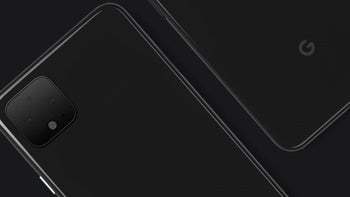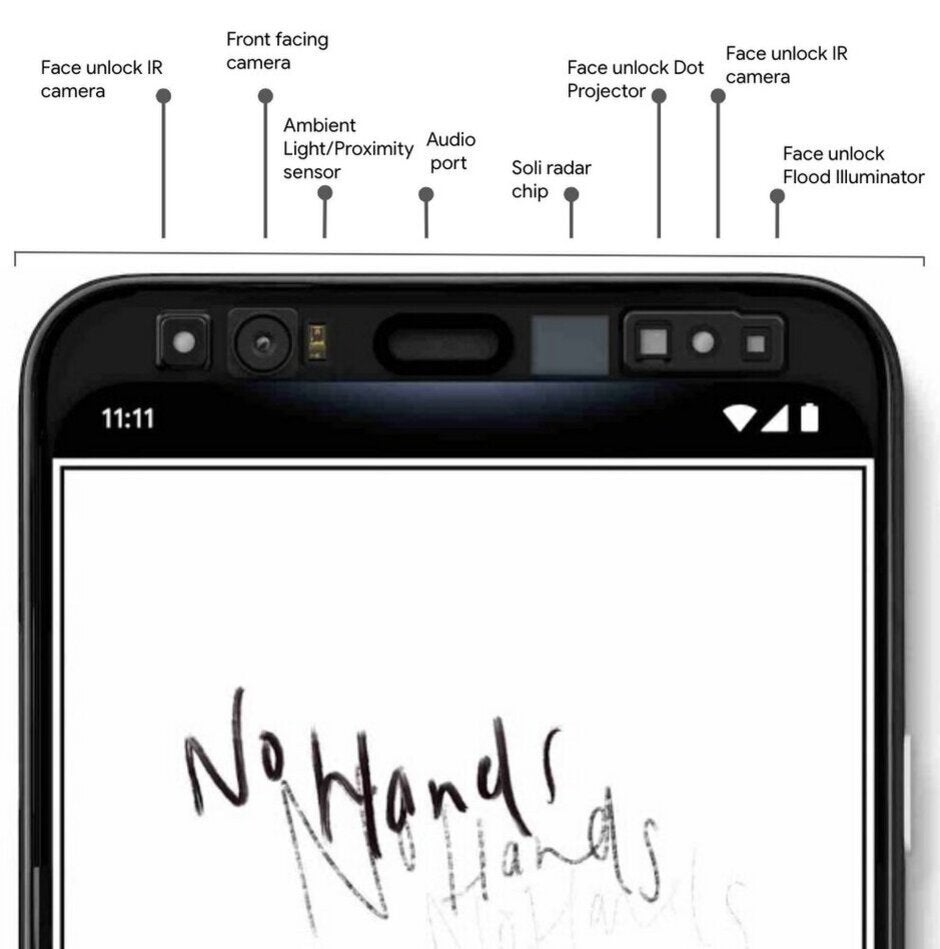FCC approval takes the Google Pixel 4 line one step closer to launch

This is a big year for the full-sized Google Pixel models as Google has huge plans for the fourth generation series. With the success of the mid-range Pixel 3a and Pixel 3a XL earlier this year, Google sold (not shipped) 88% more Pixel handsets during the second quarter on an annual basis. This gives the brand momentum heading into the expected Q4 release of the Pixel 4 and Pixel 4 XL. Google is hoping that it has successfully taken its phone series to the next tier where it will challenge the Apple iPhone and Samsung's flagship units.
To do this, Google is adding a feature it calls Motion Sense. This uses the company's Soli radar chips to allow the Pixel 4 to be controlled by micro motions of the hand. A video that the manufacturer released in July showed how a Pixel user can skip songs, snooze alarms, and silence phone calls with a wave of the hand. Google also shared a photo revealing the numerous sensors that will be found on the Pixel 4's forehead. Some of the sensors will be used for a secure facial recognition system that will challenge Apple's Face ID. We haven't seen a fingerprint scanner on the Pixel 4 line although we can't totally rule out the possibility that there is an in-screen biometric reader.
FCC certification includes frequencies for the Soli radar-based chip
Speaking of the Soli chips, the Pixel 4 and Pixel 4 XL have been certified by the FCC (via Android Police) with ID numbers of A4RG020J, A4RG020I, A4RG020MN, and A4RG020PQ. The FCC listing includes approval for the handsets to transmit in the 58-63.5GHz spectrum, which dovetails with the frequencies that the agency greenlit for Soli earlier this year. This range will also be used for the Pixel's new facial recognition system. The latter will turn on automatically when the user reaches for the phone. This could shave fractions of a second off of the time it will take the device to unlock with the user's face. The screens on the Pixel 4 series will have a 90Hz refresh rate to deliver smooth animation for game players and buttery smooth scrolling for all. The traditional smartphone, including all previous Pixel models, sports a 60Hz refresh rate.

Sensors on the top of the Pixel 4 series support Motion Sense and the phones' facial recognition system
Google, for the first time ever, is equipping the upcoming Pixel models with multiple cameras on the back. They will be housed in a square camera module in the upper left-hand corner of the phone's rear panel (think iPhone 11). The Pixel 4 will have primary and telephoto cameras on the back with a 2x optical zoom. The Pixel 4 XL will have these two plus an additional spectral sensor. The cameras also will reportedly feature wide-gamut P3 capture instead of the traditional sRGB. Used by Apple since the launch of the iPhone 7, wide-gamut P3 captures 25% more colors than the traditional camera found on an Android phone.
The FCC documents also reveal support for LTE bands 2, 4, 5, 7, 12, 13, 14, 17, 25, 26, 30, 38, 41, 48, 66 and 71. There is also the usual GSM and CDMA support. Google did ask for confidentiality so as to prevent the FCC from leaking images or other juicy details of the new phones.
The Pixel brand is one of the fastest-growing in the U.S. smartphone industry, and Google is planning to double production of Pixel handsets this year to a range of 8 million to 10 million units. Last year, Google delivered 4.7 million Pixel handsets and 70% of them were shipped to the U.S. To avoid the 15% tariff on handsets that begins on December 15th, the company is shifting production of the device out of China and into Vietnam. The new phones will be built inside an old Nokia phone factory located in the province of Bac Ninh.
The Pixel 4 series will be unveiled early next month and should be launched a week or two later.










Things that are NOT allowed: